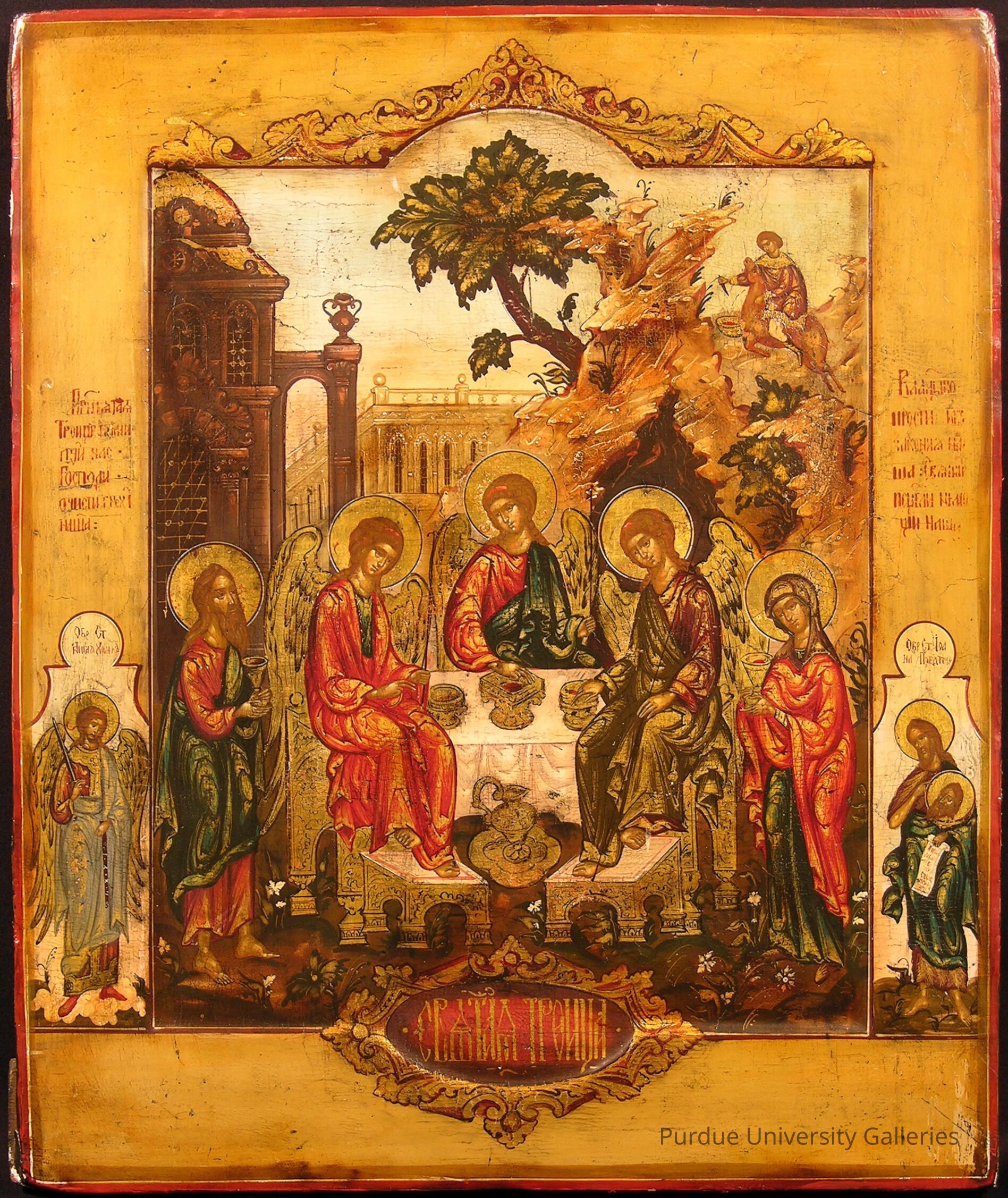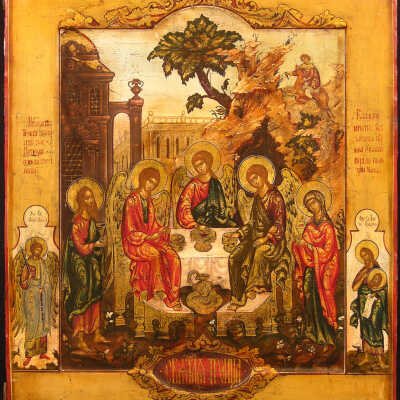Old Testament Trinity, The
Name/Title
Old Testament Trinity, TheEntry/Object ID
2005.02.029Description
Tempera on slightly curved wood panel. Wood once painted a chocolate brown and border painted in red followed by tan and finally mustard yellow before dropping into the focal image. In the mustard yellow margin is an angel and red Church Slavonic caption and on the right is another inscription with two male figures. The image has a gold decorative flourish at the top and gold caption in a red oval at the bottom. Within the image are three angels with gold leaf halos seated at a table with three chalices of red liquid flanked by a woman on the right and a bearded man on the left. In the background are two constructions and a man with a knife on horseback. The wood panel has Cyrillic script carved into the backType of Painting
PanelArtwork Details
Medium
TemperaCollection
Betsy Scheuring Icon CollectionAcquisition
Accession
2005.02Source or Donor
Betsy ScheuringAcquisition Method
GiftCredit Line
Gift of Betsy ScheuringMade/Created
Time Period
19th CenturyPlace
City
PalekhCountry
RussiaInscription/Signature/Marks
Type
InscriptionLocation
Back of paintingLanguage
CyrillicDimensions
Height
16-5/8 inWidth
13-1/2 inDepth
1-1/4 inExhibitions
Spirit Made Tangible: The Scheuring Icon Collection (2006)
Surveying the Sacred: Analysis of the Scheuring Collection of Eastern Orthodox Icons (2025)

